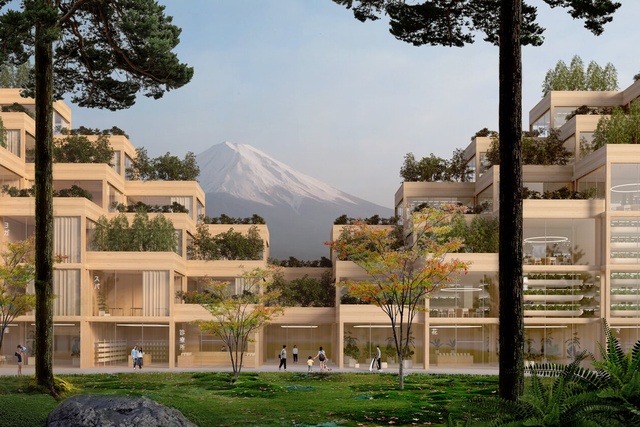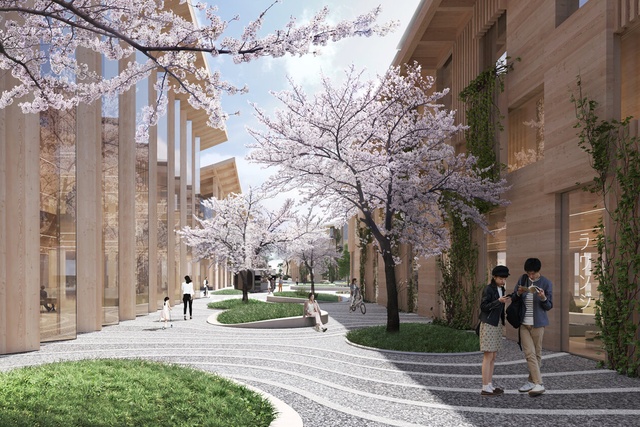Video: Toyota and BIG create a “town of the future”
Sitting on a former car factory site at the foothills of Mount Fuji in Susono City, Shizuoka is the Bjarke Ingels Group-designed Toyota Woven City.
The 70 hectare “smart city” in Japan is being seen by the Toyota Motor Corporation as a prototype town of the future, where people will work, play, live and participate in a living laboratory.
The smart city will give a real-world environment for scientists, engineers and researchers to test robotics, autonomy, AI, personal mobility and smart home technology and is “designed to allow technology to strengthen the public realm as a meeting place and to use connectivity to power human connectivity.”

Built on a site with views of Mount Fuji, Toyota Woven City strives to be a carbon neutral society, utilising solar energy, geothermal energy and hydrogen fuel cell technology. An underground network of infrastructure will include hydrogen power, stormwater filtration, and a goods delivery network.
As a home to 2,000 people, its residents will live in smart homes and test new technology, such as in-home robotics.
A pattern of porous 3x3 city blocks, each framing a courtyard accessible from the promenade or linear park, will combine social, culture and commerce uses. The grid expands and contracts to allow for a range of scales, programs and outdoor areas; one courtyard swells to the scale of a large plaza, while another forms a central park.

Most roads will be split into three to allow for different speeds, making them extremely pedestrian-friendly. The streets will be optimised for automated vehicles, the promenade reserved for micro-mobility, and the linear park for pedestrians.
The recreational promenade will operate at a reduced speed, catering for bikes, scooters and personal transport, including Toyota’s i-Walk.
On the other hand, the linear park will be a path dedicated to pedestrians, flora and fauna. The trail provides a safe and pleasant environment, with nature breaks through the ecological corridor connecting Mount Fuji to the Susono Valley.
Toyota’s e-Palette, a driverless, clean, multipurpose vehicle, will be used for shared transport and delivery.

Mr Aiko Toyoda, CEO of the Toyota Motor Corporation, says, “this is a truly unique opportunity to create an entire community, or ‘city’ from the ground up and allow us to build an infrastructure of the future that is connected, digital and sustainable, powered by Toyota’s hydrogen fuel cell technology.”
Plans are in place to break ground in phases from 2021, and it is hoped that the project will provide inspiration for others.
“As a replicable framework,” says Bjarke Ingels, “the Woven City can serve both as a prototype for future cities and as a retrofit to current cities. By simply ‘reprogramming’ existing streets, we can begin to reset the balance between people, mobility, and nature in cities as diverse as Tokyo or New York, Copenhagen or Barcelona.”
This article was first published on the Landscape Architecture Aotearoa website, which is published by the New Zealand Institute of Landscape Architects (NZILA).









